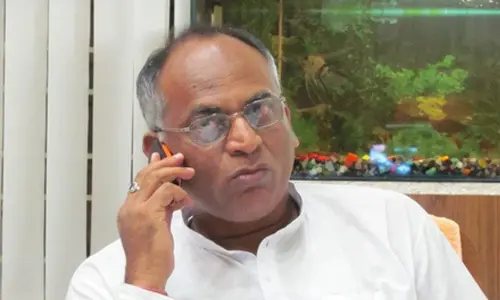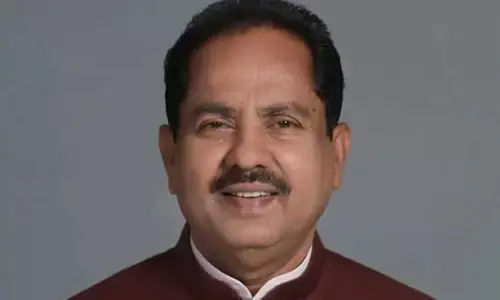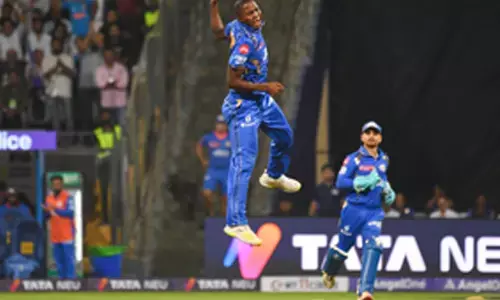Is higher judiciary in a cul-de-sac?

Why is the SC judgment flawed? The judgment restores the collegium procedure laid down by the Supreme Court in the Third Judge’s case, by way of interpreting the meaning and import of Article 124(2) of the Constitution. In doing so, the court, by a tortuous “sleight of the pen,” morphed Article 124(2) to resemble Article
The judgment of the Supreme Court striking down the National Judicial Appointments Commission (NJAC) Act is severely flawed for reasons of both Jurisprudence and equity which will be explained in this article.After all the controversy that has dogged this issue, one would have expected that the Supreme Court, after having wrested back the control over appointments to higher judiciary, would have overhauled the collegium procedure to make it more transparent, objective and credible, particularly when the judge who dissented from the majority opinion, became a member of the collegium. But his explosive revelations have only lent authenticity to all the doubts and misgivings about the collegium which led to the enactment that was struck down.
Why is the SC judgment flawed? The judgment restores the collegium procedure laid down by the Supreme Court in the Third Judge’s case, by way of interpreting the meaning and import of Article 124(2) of the Constitution. In doing so, the court, by a tortuous “sleight of the pen,” morphed Article 124(2) to resemble Article 74. In effect, it laid down that the words “after consultation” would mean concurrence” of the President with the Court’s recommendations for appointment of Supreme Court Judges. The President will have only a limited option of returning the recommendations for reconsideration. If they are reiterated, he will have no further choice but to accept them. Article 74(2) imposes an identical obligation on the President in regard to advice tendered to him by the Council of Ministers (Cabinet) in regard to legislation and governance.
Was this the intention of the Constitution makers? If so, why did they employ different language and construction for the two Articles? The debates of the Constituent Assembly provide the answer. Several members moved various amendments ranging from appointment of judges with concurrence of the Chief Justice of India to election of judges by parliament.
In settling the debate, Dr BR Ambedkar advanced the following arguments: (a) “There should be consultations with persons who are ‘ex-hypothese’ well qualified to give proper advice”; and (b) Eminent as he is, “the Chief Justice is a man with all the failings, all the sentiments and all the prejudices” attributable to common people... and “to allow the Chief Justice practically a veto upon the appointment of Judges is to really transfer to the Chief Justice, the authority which we are not prepared to vest in the President or the Government of the day.”The collegium procedure is thus a virtual repudiation of the intent of the constitution makers.
The Article 124(2) provides for consultation by the President, with not only the judges of the Supreme Court but also with such High Court judges in States, as he may deem necessary. This clearly implies that in choosing the Supreme Court Judges, the President (executive) need not be guided only and entirely by the views of the Supreme Court and could take into account where and when necessary the independent opinions of High Court judges also. Further, the careful usage of the words “after consultation” and not “in consultation” strengthens this view and suggests that the consultation process is sequential and not concurrent.
The Constitution, while locating the power of appointment with the President (executive) accorded sufficient role for judiciary in making the choices. But the collegium procedure, now being insisted upon by the SC, extinguishes this option. In effect, without an amendment by Parliament, the SC has completely changed the content and character of Article 124(2), by over-reaching its powers of interpretation, wide and extensive as they are.
The Constitution, no doubt, circumscribes the sovereignty of Parliament with its various canons. The same would also apply to the powers of interpretation of the Supreme Court. The Supreme Court can elaborate and enlarge the amplitude of a constitutional provision as it had done in respect of Right to life and Right to Education. But it cannot interpret a statutory provision to mean the opposite of what the clear and unambiguous language of that provision conveys.
Superior judges, by their oaths, bear allegiance to the Constitution. On the other hand, the President of India, by his oath has to protect, preserve and defend the Constitution, In the event of a sharp difference of opinion between the Supreme Court and the executive, in regard to the appointment of a particular person as Supreme Court Judge, whose opinion should the President accept? If, as the collegium procedure enjoins, he accepts the advice of the Supreme Court, he would have violated Article 74(2) and thereby failed to fulfill his oath. Even more, he would expose himself to the risk of impeachment, particularly, if a single political party were to dominate the Parliament. Certainly, it could not have been the intention of the Constitution makers to provide scope for such an eventuality.
The Cabinet form of government and the mandatory nature of its advice to the constitutional head are among the core features of the Indian constitution. If it was the intention of the constitution makers to take the Council of Ministers completely out of the process of appointment of superior judges as the Supreme Court has done, they would have framed Article 124(2) on the lines of Article 103 under which the President has to go completely by the advice of the Election Commission, without any role for the Cabinet, in the matter of disqualification of Members of Parliament.
Another basic feature of the Constitution relates to the finely tuned checks and balances among the three branches of governance. Here, it is pertinent to underline the point that the initial selection of High Court Judges from among whom, a majority of the Supreme Court Judges will be chosen, is crucial to the quality and credibility of superior judiciary. The collegium procedure impairs this arrangement.
The only check against the Supreme Court is the process of appointment of judges which is now taken away, leading to the widespread belief about cronyism and nepotism which late V R Krishna Menon Iyer, one of the most eminent jurists to sit on the Supreme Court, pithily and wittingly summarised with his comment that replacement of the patronage of the political boss with patronage of the judicial boss has not improved the quality of judiciary.
Let us now look at the arguments of equity. The reluctance of the Supreme Court to expose judiciary to the “sunlight” of Right to Information Act and its insistence on a closed and exclusive process of selection of superior judges, are totally inconsistent with the trust and confidence that civil society reposes in the judiciary. Justice is a cloistered virtue but a cloistered process of appointment of judges is not. There is not another instance in the world where judges chose their own successors. Selection of superior judges should not only be objective and impartial but also must be seen to be such. The collegium procedure does not meet this test.
It is contended that the 14th Law Commission endorsed the collegium procedure, forgetting the fact that other Law Commissions held a different view in favour of a Judicial Appointments Commission. So did the Administrative Reforms Commission and the National Human Rights Commission.
In fact, the most severe indictment of collegium procedure came from its own architect, Chief Justice of India Late J S Varma. Similarly, another retired Chief Justice of India, M N Venkata Chaliah, known for his jurisprudential erudition and judicial balance, shifted his position from “primacy to judiciary” to “equal weight to judiciary and executive.” It is necessary to recall that these two judges along with Justice Krishna Iyer framed a Joint recommendation to Parliament in favour of an Appointments Commission.
Looking back, the excesses perpetrated on the judiciary by an insecure executive, during the emergency days, generated an understandable concern in the Judiciary about its independence. Equating such independence with “primacy in the appointment of Superior Judges”, the Supreme Court devised the collegium procedure when an opportunity for doing so came its way. This could have led to a confrontation with the , but for the constraints of coalition politics at that time.
But in the face of growing evidence that the collegium procedure was proving as deficient and inadequate as the earlier process and the resultant public debate, the executive, after prolonged and wide-ranging consultations with all interest groups came up with the National Judgment Appointments Commission Bill which was approved almost unanimously by Parliament.
By striking down the Act on flawed reasoning as described above, the Supreme Court has renewed the danger of a confrontation with the executive. There cannot be much doubt, that when the political environment turns favourable, the executive would like to strike back. In the meantime, the friction between the two branches of governance does not bode well for dispensation of justice.
There can be no room for turf wars and ego trips in a matter as vital as harmony among the three branches of the Constitutional Tripod. Sagacity and wisdom should prevail over past injuries and imagined fears. In this context, the President of India, by virtue of his status and stature, can perhaps, intervene to find a way out. A few tweaks in the overturned NJAC Act to allay the apprehensions of the judiciary may be the answer.
(Writer is a former Governor, Tamil Nadu)














